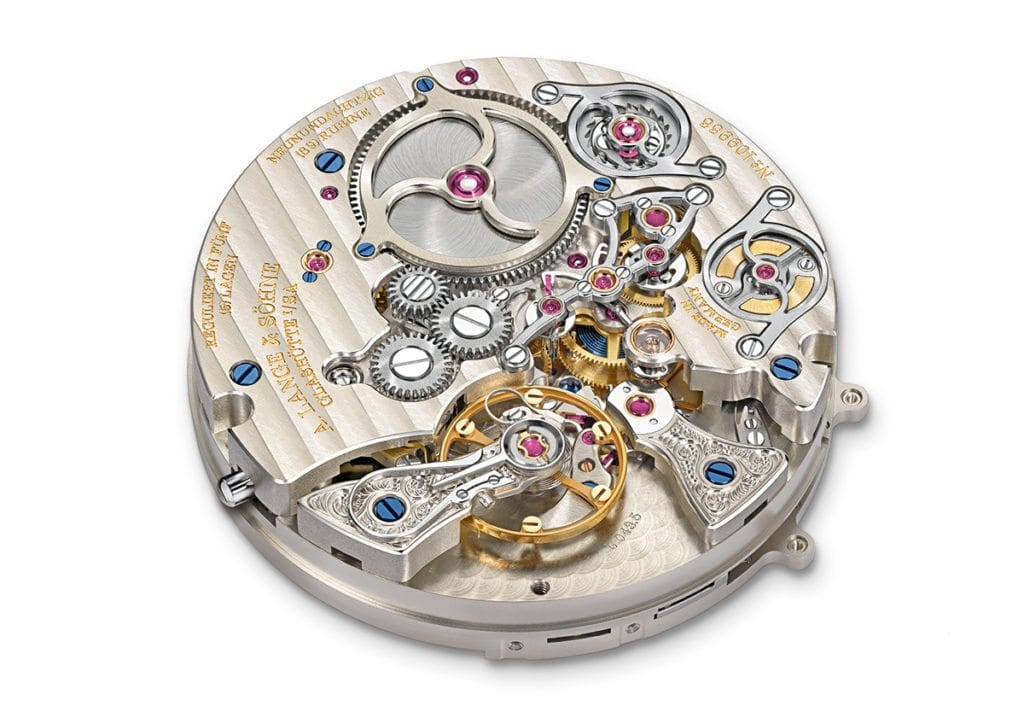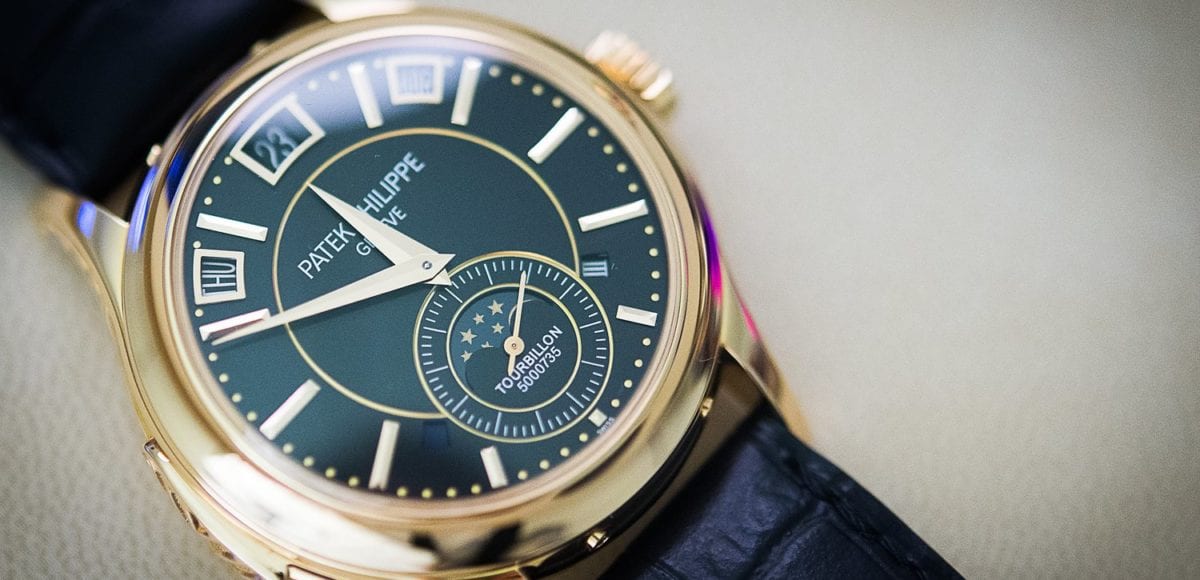A minute repeater is one of the most elaborate watch complications ever invented. Its name is pretty self-explanatory—the mechanism “repeats” the hours and minutes back to the wearer on demand. While it’s largely a decorative (but still absolutely fascinating) mechanism on the modern wristwatch, the minute repeater has gone through plenty of development and refinement in its time. It was once even particularly useful. To brush up on your knowledge, read on for more about one of watch history’s most complex complications.
How do minute repeaters work?
At a time when electricity was scarce, a minute repeater mechanism was incredibly necessary. With no constant source of light in the evenings, it was almost impossible to tell the time. That’s where a clock (or pocketwatch) that could sound out the hours and minutes was something of a godsend. Minute repeaters for clocks were first introduced in 1676 by Edward Barlow, using a rack and snail striking mechanism (if you’re reeeeally interested in how this works, here’s a video that shows it in action).
In 1687, Daniel Quare introduced another version of the minute repeater that is closer to the type used in today’s watches. Initially, minute repeaters were activated by pushing a pendant on the top of the watch. Years later, minute repeaters could be activated by pushing a slider on the side of the watch case.
In the early 1820s, Abraham Breguet adjusted the existing minute repeater design. He invented an “all-or-nothing” mechanism that prevented the slider from being released before it was fully cocked. If, and only if, the slide is pushed fully home, the all-or-nothing piece shifts out of the way, unblocking the repeater and allowing the watch to chime the correct time.
Types of Minute Repeaters
A standard, or traditional, minute repeater has three sets of chimes. The first set indicates the hour and has a lower, bass tone. The second set of treble-bass chimes tells the quarters past the hour. Lastly, the third set chimes treble notes for the number of minutes past the quarter of an hour.

A. Lange & Söhne Zeitwerk Minute Repeater Movement
But there are a couple of other types of minute repeaters. The quarter repeater chimes to indicate the hours and how many quarters are past the hour. The half-quarter repeater chimes the hours and the half-quarters. The five-minute repeater chimes the hours, followed by the number of five-minute intervals. To make the chiming sounds, minute repeater watches use two gongs that are made from two ends of the same wire and tiny hammers strike the wire to create the chimes.
The most complicated of all the minute repeaters is the grande sonnerie. A grande sonnerie will sound the hours and quarters at each quarter hour, combining a repeater and a quarter striking mechanism.
Today, most watches have luminous hour markers, so minute repeaters are no longer necessary. And, minute repeaters are made up of hundreds of parts, which makes them time-consuming to put together and expensive to buy. Watchmakers today don’t build minute repeaters because they must, but because they can. And buyers of minute repeaters don’t purchase them because they need them, but because they want them—price doesn’t matter.
Editor’s Note: This article was originally puclished on March 27, 2015. It has been updated for accuracy.
Image Credits: Header; HODINKEE. 1; A. Lange & Söhne.
Get More Articles Like This in Your Inbox
We're constantly creating great content like this. So, why not get it delivered directly to your inbox? By subscribing you agree to our Privacy Policy but you can unsubscribe at any time.






